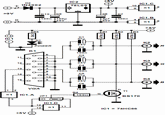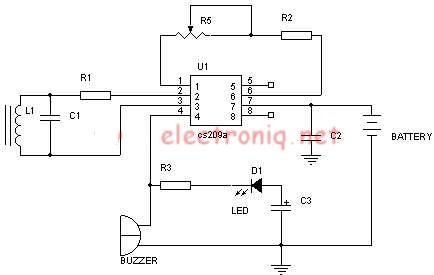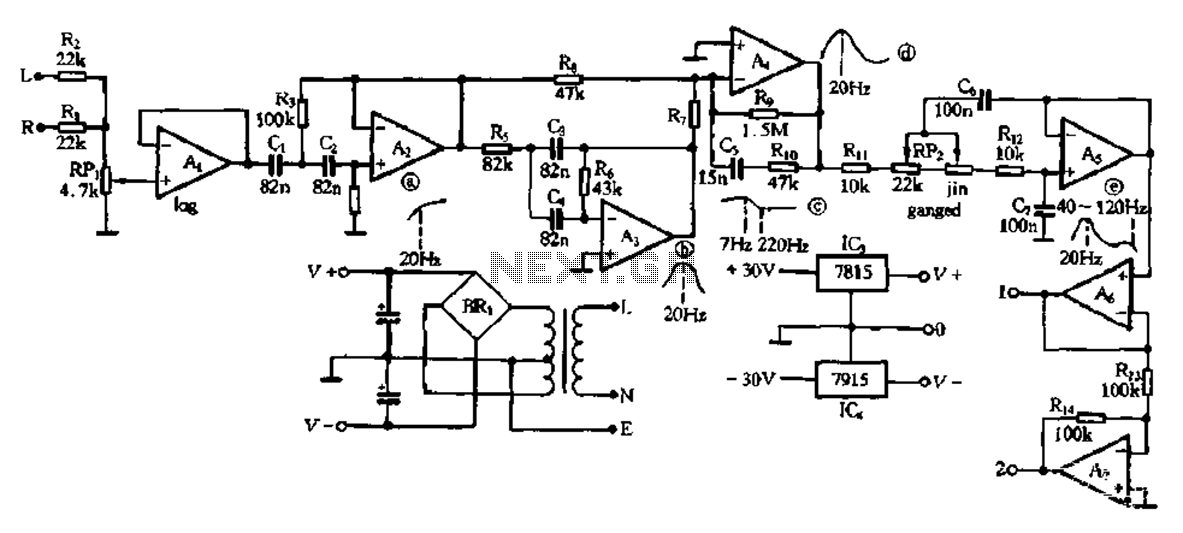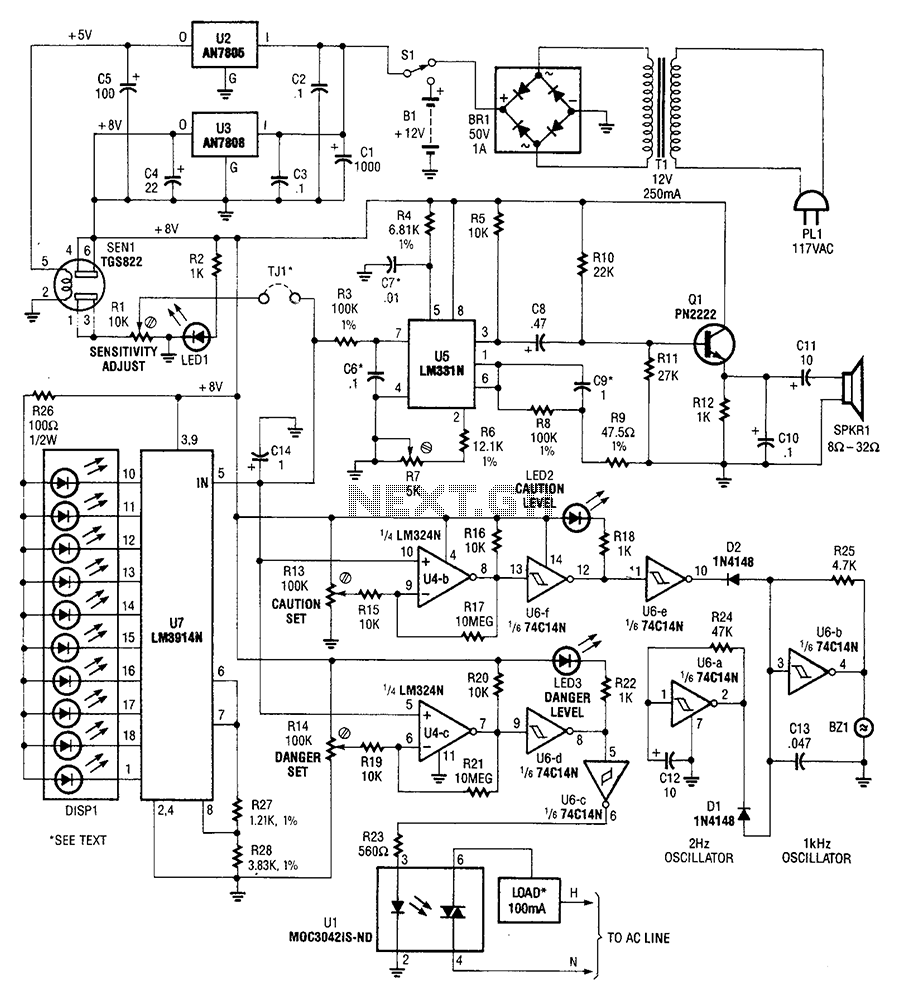
basic lm35 temperature sensor circuit
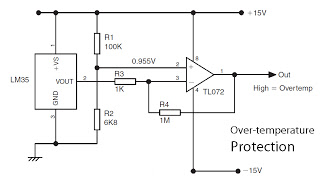
This is a basic overview of the LM35 temperature sensor, which is interfaced with an operational amplifier (op-amp) to boost its output. The LM35 provides a high output voltage when it detects high temperatures. The output can be utilized to drive a relay, fan, or other devices. For modifications to the LM35 temperature sensor, further details can be explored.
The LM35 temperature sensor is a precision integrated-circuit temperature sensor that provides an output voltage that is linearly proportional to the Celsius temperature. The sensor operates over a range of -55°C to +150°C and outputs 10 mV per degree Celsius. To enhance the output signal for further processing or control applications, an operational amplifier is often used.
In a typical circuit configuration, the LM35 is connected to the non-inverting input of an op-amp. The op-amp is configured in a non-inverting amplifier configuration to increase the output voltage from the sensor. The gain of the amplifier can be set by selecting appropriate resistor values for the feedback loop, allowing for customization based on the application requirements. For example, a gain of 2 would result in an output of 20 mV per degree Celsius, effectively doubling the sensitivity of the temperature measurement.
The output from the op-amp can be connected to various load devices such as relays or fans. A relay can be used for switching applications, allowing for control of larger loads based on the temperature readings. When the temperature exceeds a predetermined threshold, the output from the op-amp can energize the relay coil, activating the connected device. Similarly, a fan can be controlled to turn on or off based on the temperature, providing an effective cooling solution.
For modifications to the LM35 temperature sensor, additional circuitry may include filtering capacitors to stabilize the output signal, or temperature thresholds can be implemented using comparators for more complex control systems. These modifications can enhance the performance and versatility of the LM35 in various temperature monitoring and control applications.This is basic of workmaship LM35 temperatur sensor, whish is taken from the LM35 spending and boosted again by the amplifier op-amp. High output if the sensor is received by ic LM35 high temperature. You can use the output as driver relay, fan, or other. And if yo want to see modifications LM35 temperature sensor see. 🔗 External reference
The LM35 temperature sensor is a precision integrated-circuit temperature sensor that provides an output voltage that is linearly proportional to the Celsius temperature. The sensor operates over a range of -55°C to +150°C and outputs 10 mV per degree Celsius. To enhance the output signal for further processing or control applications, an operational amplifier is often used.
In a typical circuit configuration, the LM35 is connected to the non-inverting input of an op-amp. The op-amp is configured in a non-inverting amplifier configuration to increase the output voltage from the sensor. The gain of the amplifier can be set by selecting appropriate resistor values for the feedback loop, allowing for customization based on the application requirements. For example, a gain of 2 would result in an output of 20 mV per degree Celsius, effectively doubling the sensitivity of the temperature measurement.
The output from the op-amp can be connected to various load devices such as relays or fans. A relay can be used for switching applications, allowing for control of larger loads based on the temperature readings. When the temperature exceeds a predetermined threshold, the output from the op-amp can energize the relay coil, activating the connected device. Similarly, a fan can be controlled to turn on or off based on the temperature, providing an effective cooling solution.
For modifications to the LM35 temperature sensor, additional circuitry may include filtering capacitors to stabilize the output signal, or temperature thresholds can be implemented using comparators for more complex control systems. These modifications can enhance the performance and versatility of the LM35 in various temperature monitoring and control applications.This is basic of workmaship LM35 temperatur sensor, whish is taken from the LM35 spending and boosted again by the amplifier op-amp. High output if the sensor is received by ic LM35 high temperature. You can use the output as driver relay, fan, or other. And if yo want to see modifications LM35 temperature sensor see. 🔗 External reference

